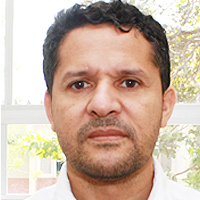Amyotropyc Lateral Sclerosis and Endogenous -Esogenous Toxicological Movens: New model to verify other Pharmacological Strategies
Published on: 5th August, 2018
OCLC Number/Unique Identifier: 7900030522
In 1874 J.M. Charcot was the first to describe ALS amyotrophic lateral sclerosis, a disease with an high non response therapy rate also to the actual therapy.
ALS is not clearly associate to only single etio-patogenetic movens but many process seem involved.
Also the strange geographic diffusion of different forms contribute to a complex syndromic pathology.
The introducing of new theories and approach can help to find more efficacy therapeutic strategies.
In this work the different neuronal damage movens and new therapeutic strategies are analyzed to produce a Unic global response to the pathologic process useful in next clinical application.
Genetic factors must be considered also added to environmental movens but also to the endogenous microenvironment of motoneuron involved.
A toxicological-biochemical-imunological approach can be useful tool to find new therapeutic strategies.
Or to improve local availability of pharmacological molecules.
Role of plants, environmental toxins and physical neurotoxicological factors in Amyotrophic lateral sclerosis, Alzheimer Disease and other Neurodegenerative Diseases
Published on: 4th March, 2019
OCLC Number/Unique Identifier: 8056301487
Aim of this work is to verify the effect of some neurotoxins, physical factors and geography in presentation of some Relevant Neurological disorder like some form of ASL, PD, AD.
The geographic diffusion of the ASL/PD in west pacific (GUAM foci), and mutation of SOD 1 and other mutations are interesting facts to verify the recent literature about the neurotoxic process.
Related to the references presented a global conclusion about the pathogenetic progression of some neurological disease will be produced as instrument for new hypothesis and for the introduction of new innovative therapeutic strategies.
Carbonic Anhydrase I modifies SOD1-induced motor neuron toxicity in Drosophila via ER stress pathway
Published on: 1st August, 2019
OCLC Number/Unique Identifier: 8195612915
Background: Drosophila models of amyotrophic lateral sclerosis (ALS) have been widely used in understanding molecular mechanisms of ALS pathogenesis as well as discovering potential targets for therapeutic drugs. Mutations in the copper/zinc superoxide dismutase (SOD1) cause ALS by gain of toxic functions and induce toxicity in fly motor neurons.
Results: In this study, we have determined that human carbonic anhydrase I (CA1) can alleviate mutant SOD1-induced motor neuron toxicity in the transgenic fly model of ALS. Interestingly, we found that motor neuron expression of CA1 could independently induce locomotion defect as well as decreasing the survival rate. In addition, CA1-induced toxicity in motor neurons is anhydrase activity-dependent. Mechanistically, we identified that both SOD1- and CA1-induced toxicity involve the activation of eIF2α in the ER stress response pathway. Downstream activation of the JNK pathway has also been implicated in the induced toxicity.
Conclusion: Our results have confirmed that SOD1-induced toxicity in fly motor neuron also involves endoplasmic reticulum (ER) stress pathway. More importantly, we have discovered a new cellular role that CA1 plays by antagonizing mutant SOD1-induced toxicity in motor neurons involving the ER stress pathway. Such information can be potentially useful for further understanding disease mechanisms and developing therapeutic targets for ALS.
Protection from the Pathogenesis of Neurodegenerative Disorders, including Alzheimer’s Disease, Amyotrophic Lateral Sclerosis, Huntington’s Disease, and Parkinson’s Diseases, through the Mitigation of Reactive Oxygen Species
Published on: 4th November, 2019
OCLC Number/Unique Identifier: 8302209826
The biological changes caused by oxidative stress (OS) are known to be involved in the etiology of neurodegenerative disorders, including Alzheimer’s disease, amyotrophic lateral sclerosis, Huntington’s disease, and Parkinson’s disease. The brain is particularly vulnerable to OS due to its high lipid content and extensive consumption of oxygen. OS processes, particularly the excessive production of reactive oxygen species (ROS), play a critical role in how neurodegenerative disorders develop. This is evidenced by in vivo studies investigating various biomolecules related to OS, such as products of lipid and DNA oxidation. Accordingly, ROS can also cause oxidative-related damage in neurodegenerative disorders, including dopamine auto-oxidation, mitochondrial dysfunction, glial cell activation, α-synuclein aggregation, excessive free iron, and changes in calcium signaling. Furthermore, excessive levels of cellular oxidants reduce antioxidant defenses, which in turn propagate the cycle of OS. As such, it is increasingly important to determine the linkage between a high intake of antioxidants through dietary interventions and a lower risk of developing neurodegenerative diseases. Indeed, in addition to modulating the immune system, optimal nutritional status is capable of changing various processes of neuroinflammation known to be involved in the pathogenesis of neurodegeneration. Accordingly, a better understanding of the role ROS plays in the etiology of neurodegeneration is needed, along with the identification of dietary interventions that may lead to improved therapeutic strategies for both the treatment and prevention of neurodegenerative disorders. Therefore, this review presents a comprehensive summary of the role of ROS in the pathogenesis of neurodegenerative disorders. In addition, nutrients believed to be useful for mitigating and counteracting ROS are discussed.
Central nervous system diseases associated with blood brain barrier breakdown - A Comprehensive update of existing literature
Published on: 25th August, 2020
OCLC Number/Unique Identifier: 8799409922
Blood vessels that supply and feed the central nervous system (CNS) possess unique and exclusive properties, named as blood–brain barrier (BBB). It is responsible for tight regulation of the movement of ions, molecules, and cells between the blood and the brain thereby maintaining controlled chemical composition of the neuronal milieu required for appropriate functioning. It also protects the neural tissue from toxic plasma components, blood cells and pathogens from entering the brain. In this review the importance of BBB and its disruption causing brain pathology and progression to different neurological diseases like Alzheimer’s disease (AD), Parkinson’s disease (PD), Amyotrophic lateral sclerosis (ALS), Huntington’s disease (HD) etc. will be discussed.
Facial-onset sensory-motor neuronopathy, a rare variant of Huntington’s disease or chance association?
Published on: 15th July, 2021
OCLC Number/Unique Identifier: 9136190397
Objectives: To describe a patient with facial-onset sensory-motor neuronopathy (FOSMN) that later developed Huntington’s disease (HD).
Case report: A 62-year-old woman complained of progressive dysphagia 8 years before referral. At initial evaluation, there was excessive salivation, dysphagia, and sensory-motor trigeminal impairment. Denervation was noted on the upper limbs and the tongue. Blink reflexes were abolished. Genetic study of amyotrophic lateral sclerosis (ALS)-related genes was normal. She was diagnosed with FOSMN syndrome. Her clinical state progressively worsened with corneal anesthesia, severe denutrition, right arm and axial weakness. Seven years after referral, she was unable walk and developed generalized chorea. Abnormal huntingtin gene repeat expansion confirmed the diagnosis of HD. She died 16 years after onset of dysphagia.
Conclusion: Cases with both HD and ALS have already been reported but not FOSMN and HD, to our knowledge. Some FOSMN cases have been linked to ALS-related gene mutations and HD phenocopies have been associated with C9ORF72 repeat expansions. Recently, huntingtin repeat expansions were described in the ALS population. Although a chance association cannot be excluded, data from the literature are in favor of a pathogenic relationship between FOSMN and HD in this particular case. We suggest that huntingtin gene be more systematically studied in patients with FOSMN.
Mercury toxicity and amyotrophic lateral sclerosis
Published on: 23rd March, 2023
Recent clinical, experimental and epidemiological studies report that ALS is thought possibly due to a multi-stage process, arising from a combination of genetic susceptibility and environmental factors, which alone or superimposed, perhaps on genetic polymorphism yet to be identified, may contribute to the incidence rate of sporadic ALS. In particular, a large amount of evidence suggests that mercury is toxic to motor neurons and may be a risk factor for ALS, playing a part in its pathogenesis. In fact, there have been case reports of ALS or ALS-like symptoms associated with mercury exposure, thus raising the possibility that mercury could be one of the non-genetic factors of the multistep process that is thought to underlie ALS. In order to give recent elucidations on the putative relationship between mercury exposure and ALS, we reviewed all the papers reported in the literature and published on Pubmed from 2006 to 2022. Despite a number of pathogenetic mechanisms that have been linked to mercury, evidence linking exposure to mercury to ALS is not consistent and discordant and, based on the evaluation of the articles, which emerged from our analysis that to date no convincing correlation between mercury and ALS has been established and no conclusive evidence has been enlightened suggesting increased mercury exposure is associated with ALS.
The Neuroprotective Role of TERT Influences the Expression of SOD1 in Motor Neurons and Mouse Brain: Implications for fALS
Published on: 14th October, 2023
Amyotrophic lateral sclerosis (ALS) disease is characterized by degeneration of motor neurons and elevation of brain oxidative stress. Previous studies demonstrated the neuroprotective effects of Telomerase reverse transcriptase (TERT) from oxidative stress. We showed that increasing TERT expression in the brain of the Tg hSOD1G93A mouse ALS model attenuated the disease pathology and increased the survival of motor neurons exposed to oxidative stress. How TERT increased the survival of motor neurons exposed to oxidative stress is not yet clear. Here we investigated the consequence of TERT depletion in motor neuron cells under normal and oxidative stress conditions and in mouse brains of TERT knockout mice, on the expression and activity of SOD1 and catalase enzymes. Depletion of mouse TERT caused mitochondrial dysfunction and impaired catalase and SOD1 activity. Compensation with hTERT restored the activity of SOD1. SOD1 expression increased in the brain of TERT KO and in ALS mice and decreased in the brain of WT mice treated with telomerase-increasing compounds. We suggest that the ability of TERT to protect neurons from oxidative stress affects the expression and activity of SOD1, in a TERT-dependent manner, and supports the notion of TERT as a therapeutic target for neurodegenerative diseases like ALS.
















